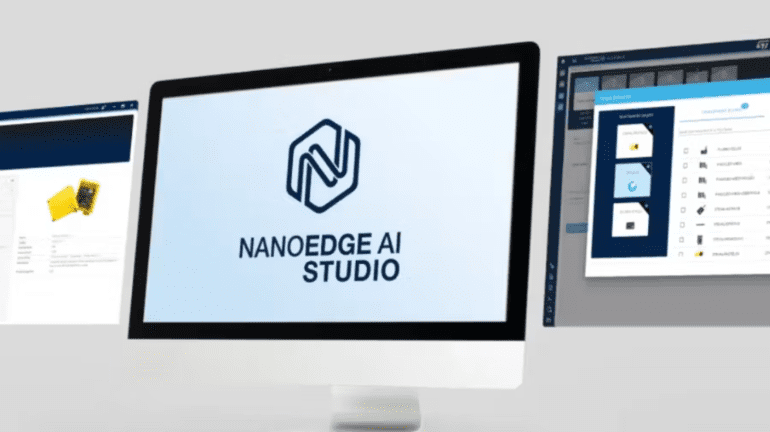TL;DR:
- STMicroelectronics offers free access to NanoEdge AI Studio for STM32 family devices.
- A strategic move to promote innovation in on-device edge AI development.
- Version 4.3 introduces support for STM32 microcontrollers and other Arm Cortex-M chips.
- The software streamlines machine learning model development for resource-constrained platforms.
- Models retain the ability to learn directly on-device.
- Free deployment is available for STM32 projects; third-party hardware may require a special license agreement.
- NanoEdge AI Studio 4.3 is downloadable for Windows and Linux.
Main AI News:
In a strategic move aimed at fostering innovation and accessibility in the realm of on-device edge artificial intelligence (edge AI), STMicroelectronics has made a groundbreaking announcement. The company is granting free access to its flagship NanoEdge AI Studio design tool for developers targeting STM32 family devices.
STMicro’s President of the Microcontrollers and Digital ICs Group, Remi El Ouazzane, underlines the significance of this decision, stating, “Our goal is to ensure that accurate, power-efficient AI algorithms can be built to run on resource-constrained edge computing devices as easily, quickly, and cost-effectively as possible.” This move is expected to empower developers across the Arm Cortex-M ecosystem, enabling them to create and deploy libraries on a multitude of devices, all at no cost.
Version 4.3 of the NanoEdge AI Studio introduces native support for STMicro’s STM32 microcontroller family, in addition to compatibility with “more than 1,000 production-ready Arm Cortex-M” chips and boards from various manufacturers. This upgraded software now features a user-friendly step-by-step assistant for project initiation and an advanced validation tool to ensure that the machine learning models it generates are production-ready.
The software’s mission is clear: accelerate and streamline the development of energy-efficient on-device machine learning models, making them readily deployable on resource-constrained platforms. Furthermore, these models retain the capability to learn directly on the device, opening doors to a wide range of applications such as extreme weather prediction, human activity recognition for wearables, fault detection in linear actuators, and automated scoring of table tennis games.
While the release of NanoEdge AI Studio 4.3 brings free access to this invaluable tool, there is a slight caveat. Truly free deployment is exclusively available for projects targeting STMicro’s STM32 microcontrollers. Developers working with third-party Arm Cortex-M hardware will need to adhere to a “special license agreement,” details of which remain undisclosed at this time.
STMicro’s NanoEdge AI Studio 4.3 is now available for download on both Windows and Linux platforms through the company’s official website.
Conclusion:
STMicroelectronics’ decision to provide free access to NanoEdge AI Studio for STM32 devices signifies a significant shift in the edge AI market. By democratizing access to advanced AI development tools, the company is likely to inspire a wave of innovation in on-device AI applications. This move could lead to a broader adoption of AI in resource-constrained environments and create opportunities for developers across the Arm Cortex-M ecosystem. However, the introduction of a special license agreement for third-party hardware indicates a potential monetization strategy, which could impact the adoption rate among these users. Overall, this initiative is poised to reshape the landscape of edge AI development.

